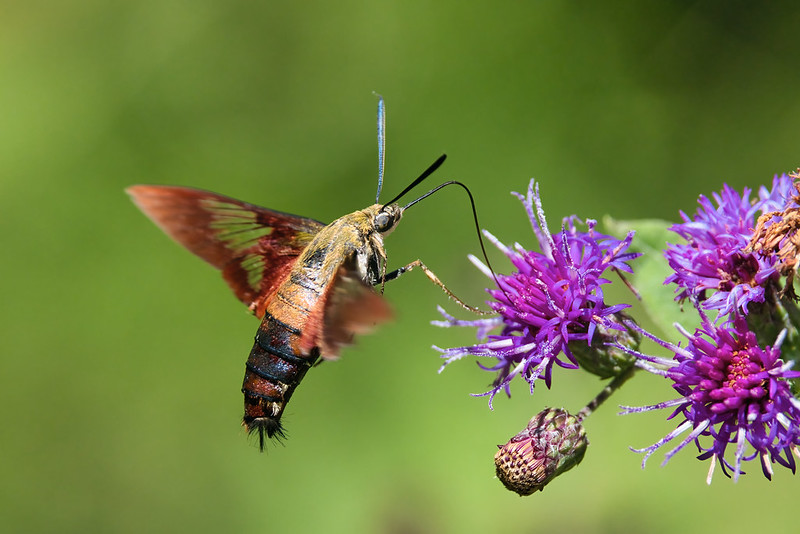I recently photographed a Hummingbird Moth during a hike in the Ouachita National Forest in Arkansas.

The Hummingbird Moth’s Unique Flight
The Hummingbird Moth, Hemaris thysbe, is known for its hummingbird-like flight. It hovers in mid-air, beating its wings rapidly, with agility that surprises many. This moth’s movement often makes people mistake it for a bird.
Feeding and Pollination
Its long, straw-like proboscis allows it to extract nectar deep within flowers. This feeding method resembles how a hummingbird drinks from flowers. While feeding, it also aids in pollination by transferring pollen from one flower to another. Its role in plant reproduction is critical.
Popularity in Photography
The Hummingbird Moth is increasingly popular with nature photographers. Its unique behavior and appearance make it an appealing subject. Capturing a clear image of it in flight highlights the details that are difficult to see with the naked eye.
Ecological Importance
This moth plays a crucial role in pollination, supporting plant diversity. It helps maintain ecosystems by aiding in the reproduction of plants, making it an important yet often overlooked part of nature’s balance.
Raising Awareness
Though it has gained some recognition, the Hummingbird Moth deserves wider appreciation. By sharing our encounters with this species, we help raise awareness about the importance of preserving its habitat and the ecosystems it supports.
Encountering this moth in the Ouachita National Forest was a reminder of the hidden marvels in nature. Its flight, feeding, and ecological contributions make it an extraordinary insect. As wildlife photographers and nature enthusiasts, we should continue to protect these species and their habitats for future generations.
